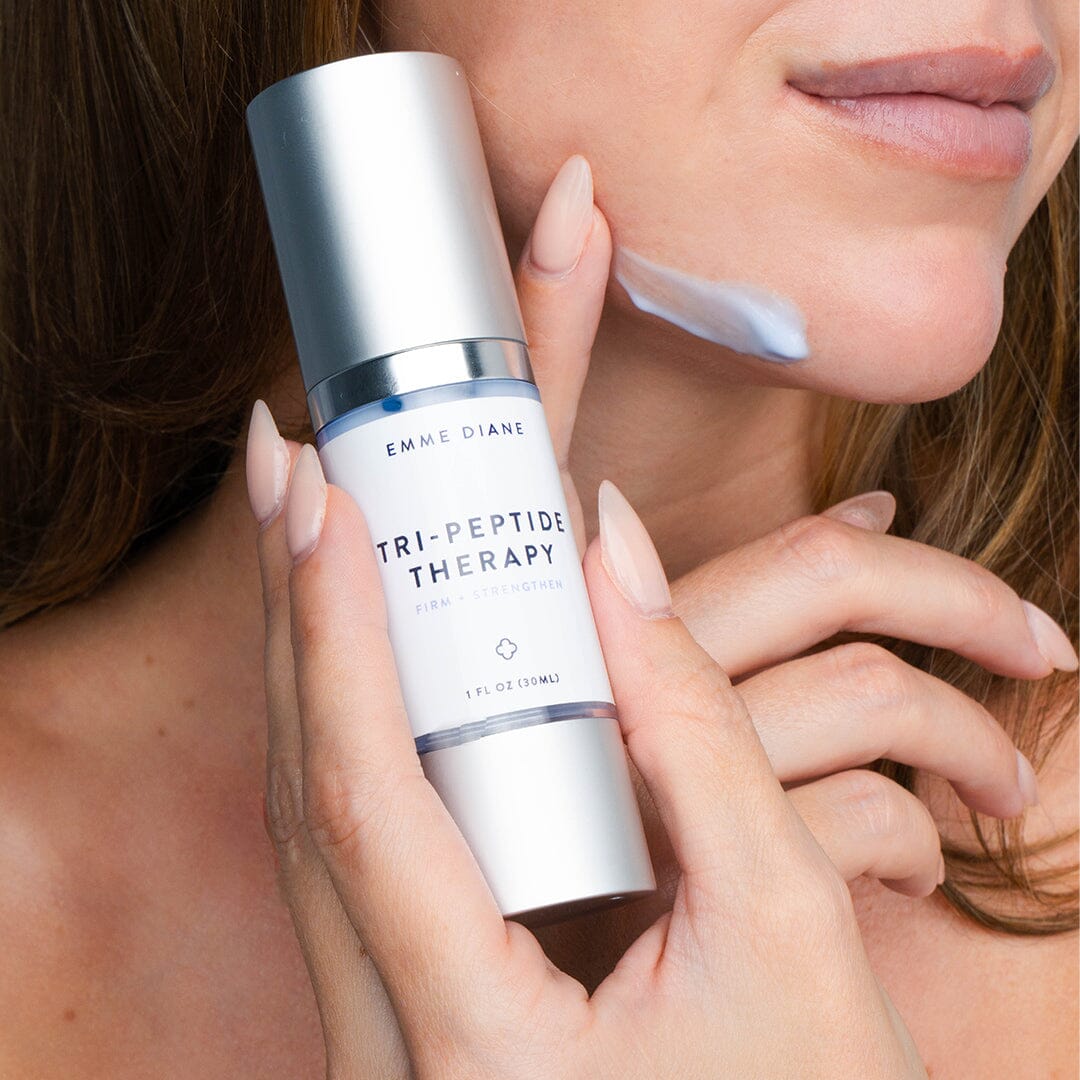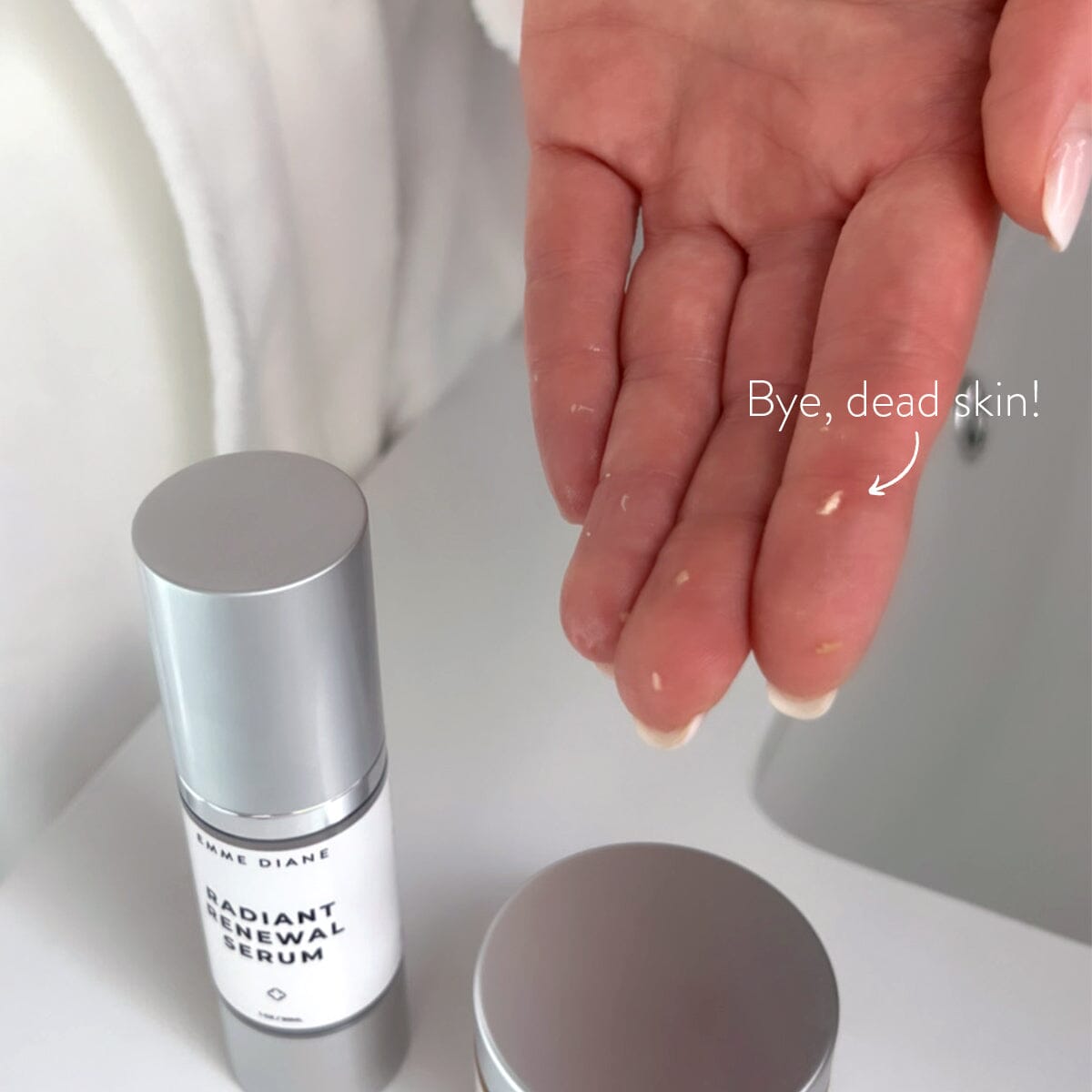Navigating New Product Breakouts: The Purging Phenomenon
by Emily Linehan on October 26, 2023
You've just started a new skincare routine or introduced a new product, only to wake up a few days later to an unexpected breakout. Understandably, it might feel disheartening. You may be thinking, “Isn’t this new product supposed to help my skin?” But before you toss that product into the trash, let's talk about a phenomenon known as skin purging. As an esthetician, I've guided countless clients through this process, and I’m here to demystify it for you.
What is Skin Purging?
In simplest terms, skin purging is a reaction that can occur when you introduce your skin to certain types of new ingredients, particularly those that accelerate the skin's natural cell turnover rate. It's essentially a 'fast-forward' button for breakouts that were already on their way.
When the cell turnover rate is boosted, the skin begins to shed dead skin cells faster than usual. This means that clogged pores (or microcomedones) lurking beneath the skin can manifest as breakouts more quickly than usual, whereas, under normal circumstances, they could take up to ninety days to surface.
While the sudden onset of breakouts can be alarming, in reality, these blemishes were already in the making, they have just been revealed sooner due to the product's efficacy.
Purge-Provoking Ingredients
While it may seem counterintuitive, many ingredients that excel at treating breakouts can also result in a purging phase. As we just discussed, these active ingredients promote rapid cell turnover. Some of these commonly include:
- Exfoliating Acids: Great for shedding dead skin cells, but can sometimes lead to purging. All acids can potentially provoke a purging phase, but salicylic acid is one of the main culprits since it is oil-soluble. This means that it is able to penetrate the skin's lipid barrier to directly dissolve the keratin plugs and bring everything clogging the pore to the skin's surface.
- Retinol and Retinoids: These Vitamin A derivatives rejuvenate from within, potentially causing surface breakouts initially. While retinoids (often prescription-based, like tretinoin) are harsher on the skin, even over-the-counter retinol can occasionally lead to purging.
- Benzoyl Peroxide: This is the queen of acne fighters. It suffocates acne bacteria, reduces inflammation, and prevents clogged pores, but it might lead to initial breakouts as it gets to work.
Since everyone’s skin is different, everyone will experience purging in a different way, and some may not even experience it at all. But while the purging phase can be normal, you never want to rush into a relationship with a new ingredient. Instead, you should slowly acclimate your skin to new active ingredients to avoid any additional unwanted side effects like excessive dryness, redness, or irritation.
Why is Skin Purging a Good Thing?
I know the word "purging" might sound a bit daunting, especially when we're talking about your skin, but trust me, it can be a real game-changer for your complexion. Imagine purging as a detox for your skin: it works by bringing deep-seated issues to the surface, allowing them to be addressed and cleared. And I promise, once your skin navigates through this transition phase, the results can be astounding. The product you've introduced—be it for clearer skin, reduced wrinkles, or that sought-after glow—will start showcasing its benefits.
Purging vs Breakouts
It's essential to understand the difference between skin purging and standard breakouts or allergic reactions. If you've recently added a product with active ingredients, like those we've discussed earlier, there's a good chance your skin is in the purging phase. While purging from active ingredients is normal, it’s important to note that some products may be formulated with pore-clogging ingredients as well. These could keep you in a constant cycle of breaking out… therefore, always ensure you use products that are 100% acne-safe, like Emme Diane products.
Another way to distinguish between purging and regular breakouts is by observing the location of pimples. If they're cropping up in their usual spots, it might just be your skin adjusting and purging. However, breakouts in unusual areas might indicate a reaction rather than purging. Also, while purging tends to show improvement over 2-6 weeks of consistent product use, a worsening or non-improving condition might point to a breakout.
Now if you notice symptoms like redness, itching, burning sensations, or rashes after using a product, your skin might be having a reaction. Sometimes you may even experience clusters of tiny bumps that may be mistaken as pimples but are actually dermatitis.
The Bottom Line
Although we live in an era of instant gratification, it’s important to look at skin purging as a temporary setback for long-term gain. If you suspect your skin is purging after introducing a new product, try to be patient and consistent with its use. However, always monitor your skin’s reaction and seek guidance if unsure. If you have concerns or need personalized advice, I’m here to help. Simply complete my online consultation, or, if you’re an existing client, check in with me.


